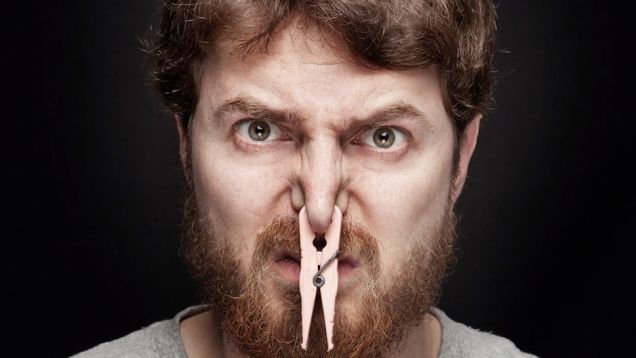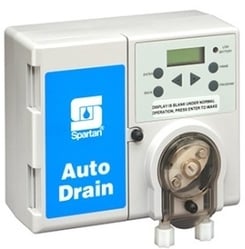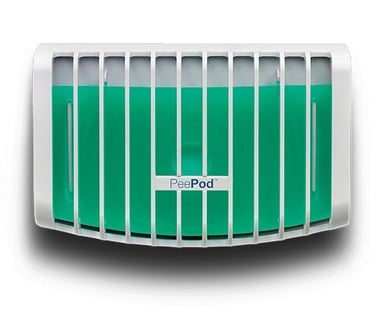
Restrooms reflect the quality of service provided throughout your business. In fact, a recent survey lead by Cintas Corporation, revealed that 89% of people consider a restroom dirty if it smells bad. As someone in charge of maintaining the cleanliness of your facility’s restrooms, how could you neglect restroom odor control? The question to ask is not should you invest, but in which areas to focus your investment within the restroom. What signs help determine areas of concern to prevent restroom odors in your facility?
After all, according to USA Today, 3 in 10 consumers say there are no second chances with dirty restrooms , and that they will not return to the offensive restaurant.
Where to look?
We’ve exhausted our knowledge to create a list of 9 areas of focus within your facility to detect the source of odor.
Poor/Inadequate Ventilation:
When was the last time your air vents were cleaned? Check them for dirt and other debris to prevent airflow blockages. Clean them on a consistent basis. Have you checked your exhaust fans? If not properly working, they will be ineffective in removing humidity. Excessive moisture in the air stimulates the growth of bacteria, viruses, and fungi. Humid places create a breeding ground for these microorganisms. When possible, open windows and doors to create efficient airflow within your restroom and remove moisture.
Pooling Water/Leaks:
Wet, damp, and humid places stimulate bacterial growth and stench. Check around sinks, countertops, and even under hand dryers. If pooling exists, it could mean there are leaky pipes. Check the walls for damage and mildew or mold growth which would mean there are hidden leaks that need to be addressed. Mildew and mold are unsafe and unsanitary, not only causing odor, but potential long-term structural damage.
Improper Surface Disinfection:
Whether you realize it or not, every time someone flushes a toilet or urinal a plume of fecal bacteria sprays up and out coating the surrounding fixtures, walls, and floor. Check the base of your toilet; does it look like an employee has ever wiped it down? Now look up, what about the ceiling? Clean the ceiling a few times a year to prevent it from collecting odor sources. Regularly disinfect all touch-point areas within your bathroom including the sinks, toilets, and dispensers. Make sure you use a disinfectant spray instead of an all-purpose cleaner to kill bacteria and other micro-organisms that cause odors. Use a floor splatter guard to prevent urine from absorbing into the floor. A simple and effective way to prevent overspray is to close the lid before flushing.
Dirty Tile, Grout, and Caulk:
Check in between the tiles. Grout is porous and prone to moisture. Leaving soil and bacteria on the surface for the long-term allows the smell to linger. It’s tough to scrub without the proper tools and chemicals. Maybe it’s time to invest in a floor scrubber. Scrub floors with bio-enzymatic products that digest urine and other unsanitary soils on the floor. Over time, caulk cracks and deteriorates creating a perfect hiding place for bacteria to grow especially around toilets and urinals. Remove old caulk and replace it with fresh caulk to avoid offensive urine odors.Clogged Drains:
Dirty Supply Closet:
In many cases the supply closet is located within or near a restroom. Most are disorganized and dirty becoming a major source of odor. Keep your tools and closet clean, neat, and sanitized. Dry mop heads, rinse dirty buckets, and pour chemicals over the sink so they don’t spill on the floor. Maintaining a tidy closet reflects positively on you.Empty or Broken Odor Control System:
Customer/Employee Complaints:
Is your dirty restroom a hot topic? Listen for repeat complaints and watch for customer reactions as they walk in or out. If your employees are bringing their own air fresheners to mask the odor, you have an issue. In a restaurant, especially where there’s great food and great service but you’ve seen a decline in business, consider if a dirty restroom is the cause. Test it yourself. Don’t ignore your own problem. When was the last time you walked in your restroom? If you were a customer would you be satisfied?Pay close attention to the areas described above and heed the warning to eliminate those chronic odors from destroying the experience you intend to create in your facility.




Enjoy this blog? Leave a comment or ask a question!